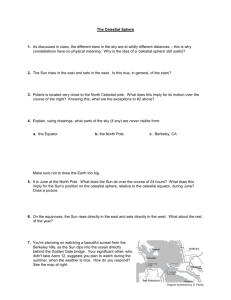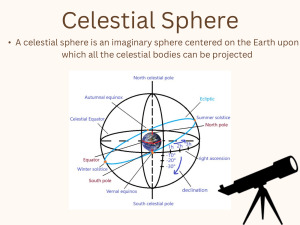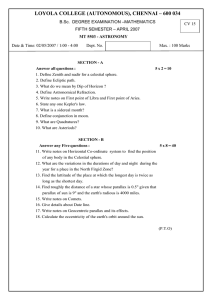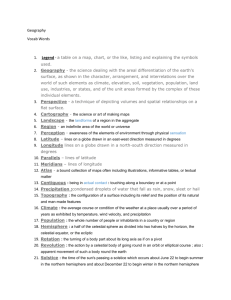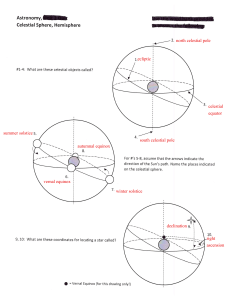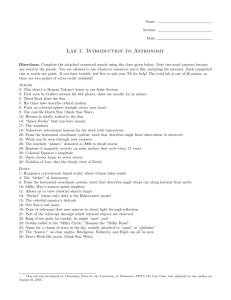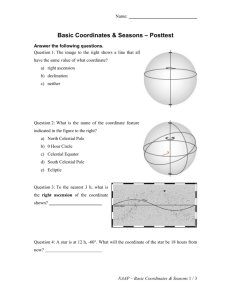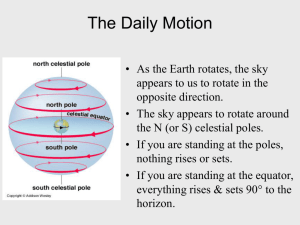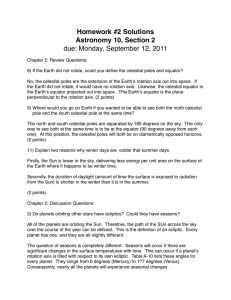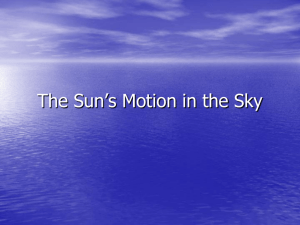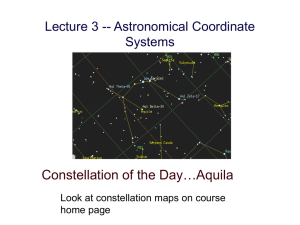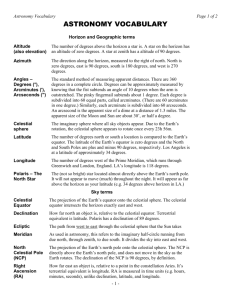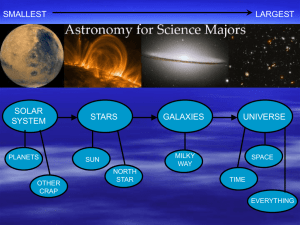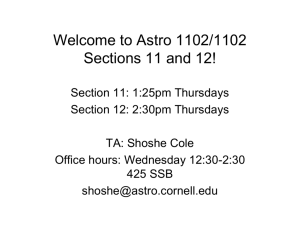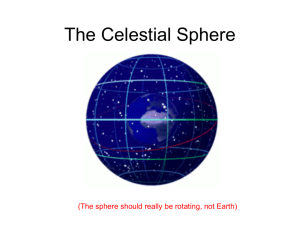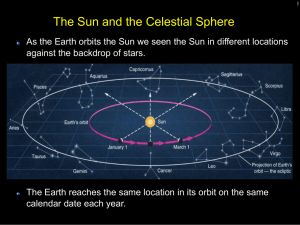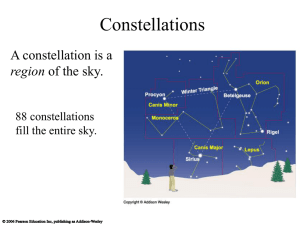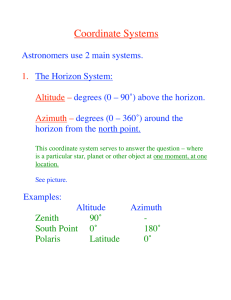The Celestial Sphere 1. As discussed in class, the different stars in
advertisement
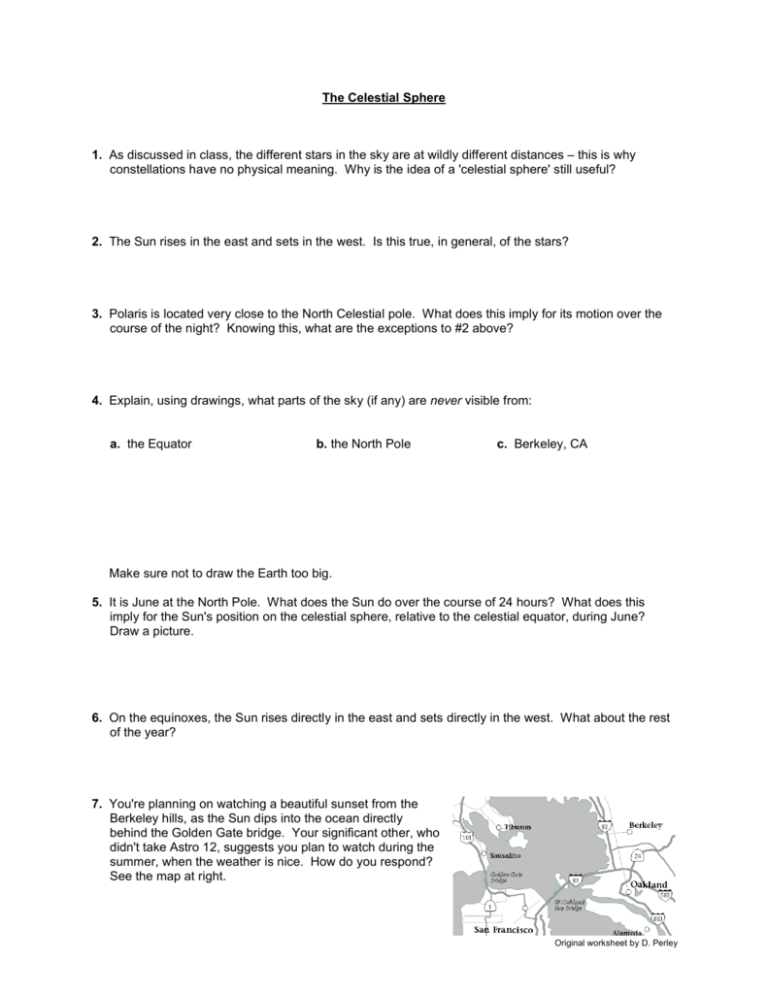
The Celestial Sphere 1. As discussed in class, the different stars in the sky are at wildly different distances – this is why constellations have no physical meaning. Why is the idea of a 'celestial sphere' still useful? 2. The Sun rises in the east and sets in the west. Is this true, in general, of the stars? 3. Polaris is located very close to the North Celestial pole. What does this imply for its motion over the course of the night? Knowing this, what are the exceptions to #2 above? 4. Explain, using drawings, what parts of the sky (if any) are never visible from: a. the Equator b. the North Pole c. Berkeley, CA Make sure not to draw the Earth too big. 5. It is June at the North Pole. What does the Sun do over the course of 24 hours? What does this imply for the Sun's position on the celestial sphere, relative to the celestial equator, during June? Draw a picture. 6. On the equinoxes, the Sun rises directly in the east and sets directly in the west. What about the rest of the year? 7. You're planning on watching a beautiful sunset from the Berkeley hills, as the Sun dips into the ocean directly behind the Golden Gate bridge. Your significant other, who didn't take Astro 12, suggests you plan to watch during the summer, when the weather is nice. How do you respond? See the map at right. Original worksheet by D. Perley
